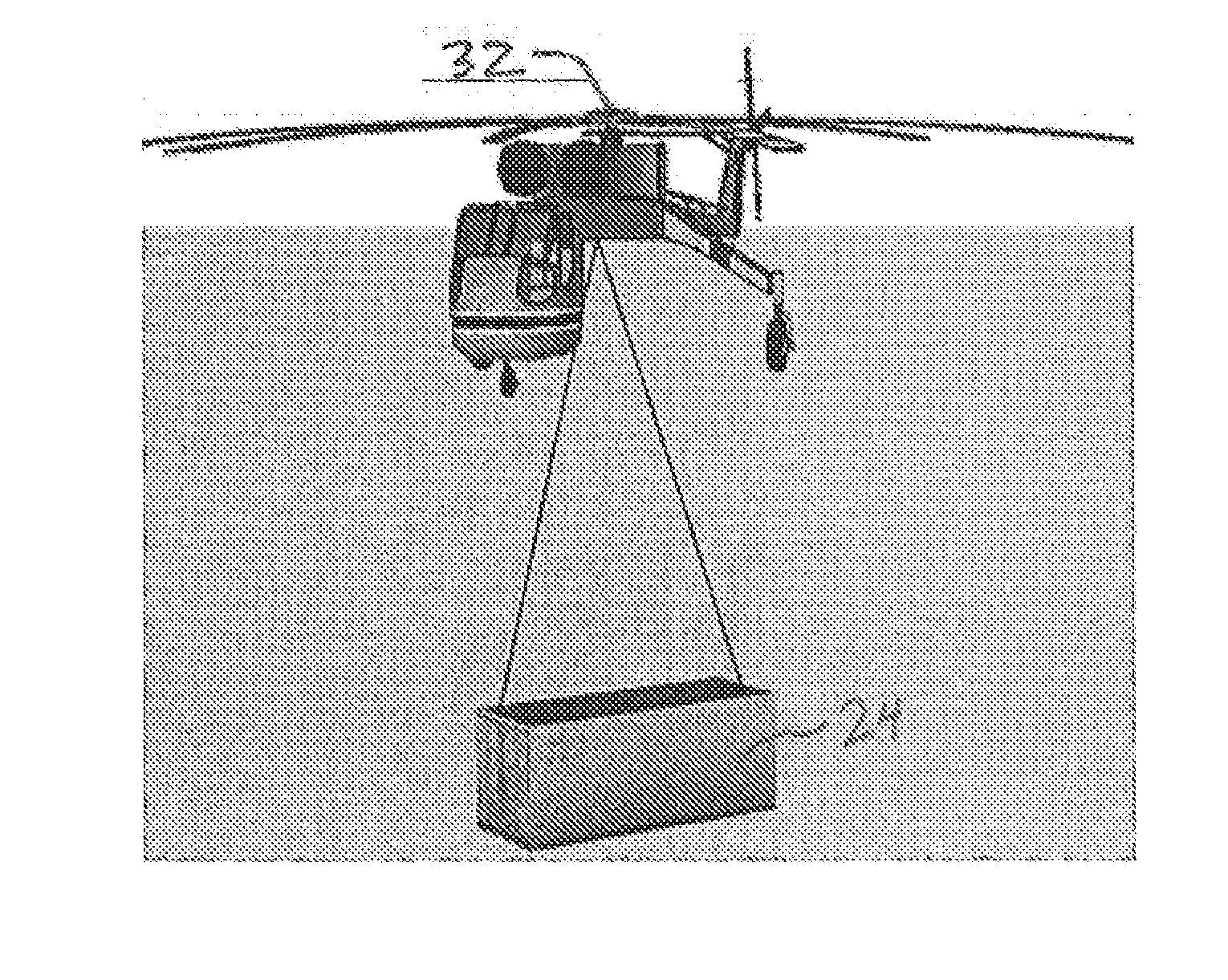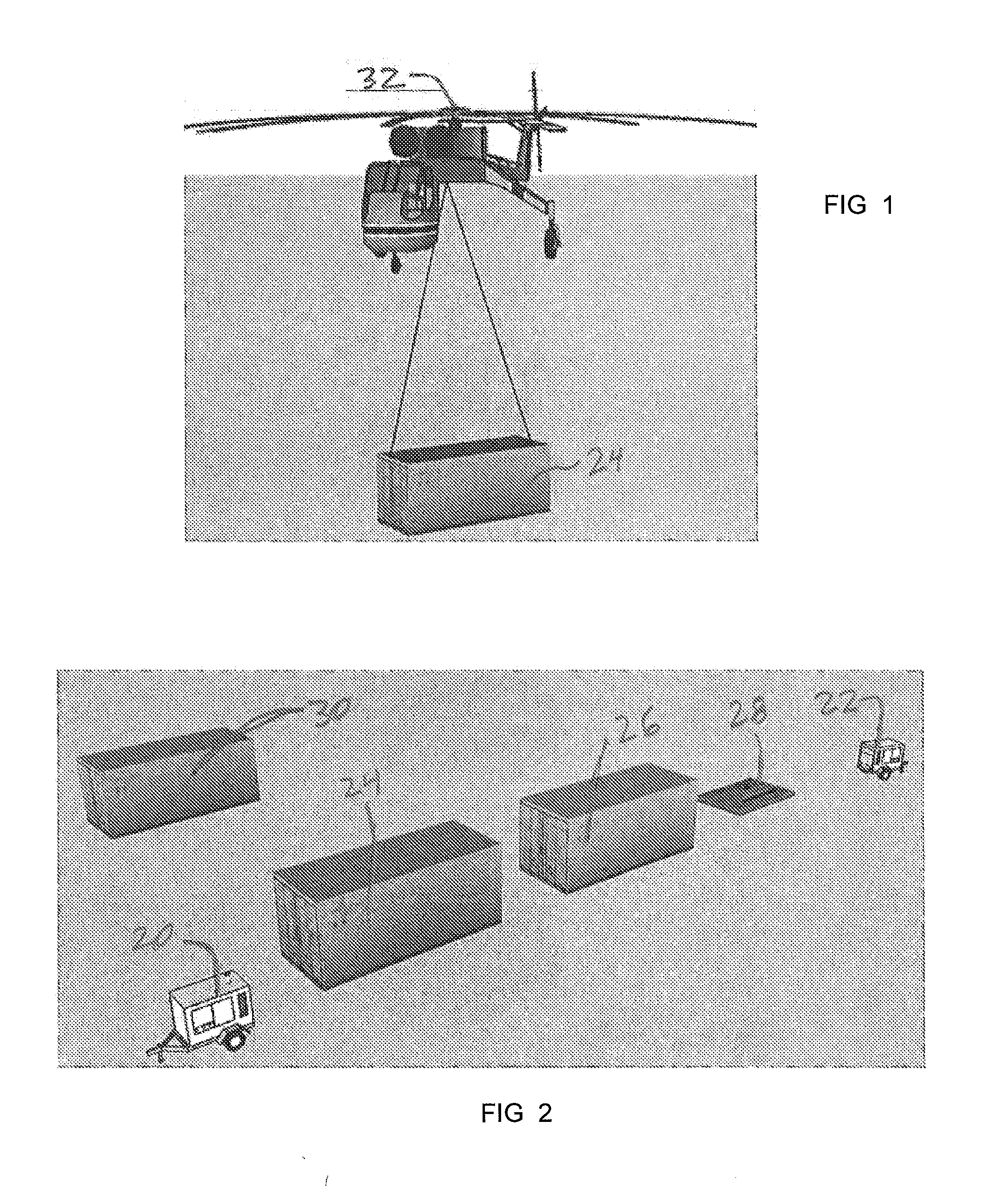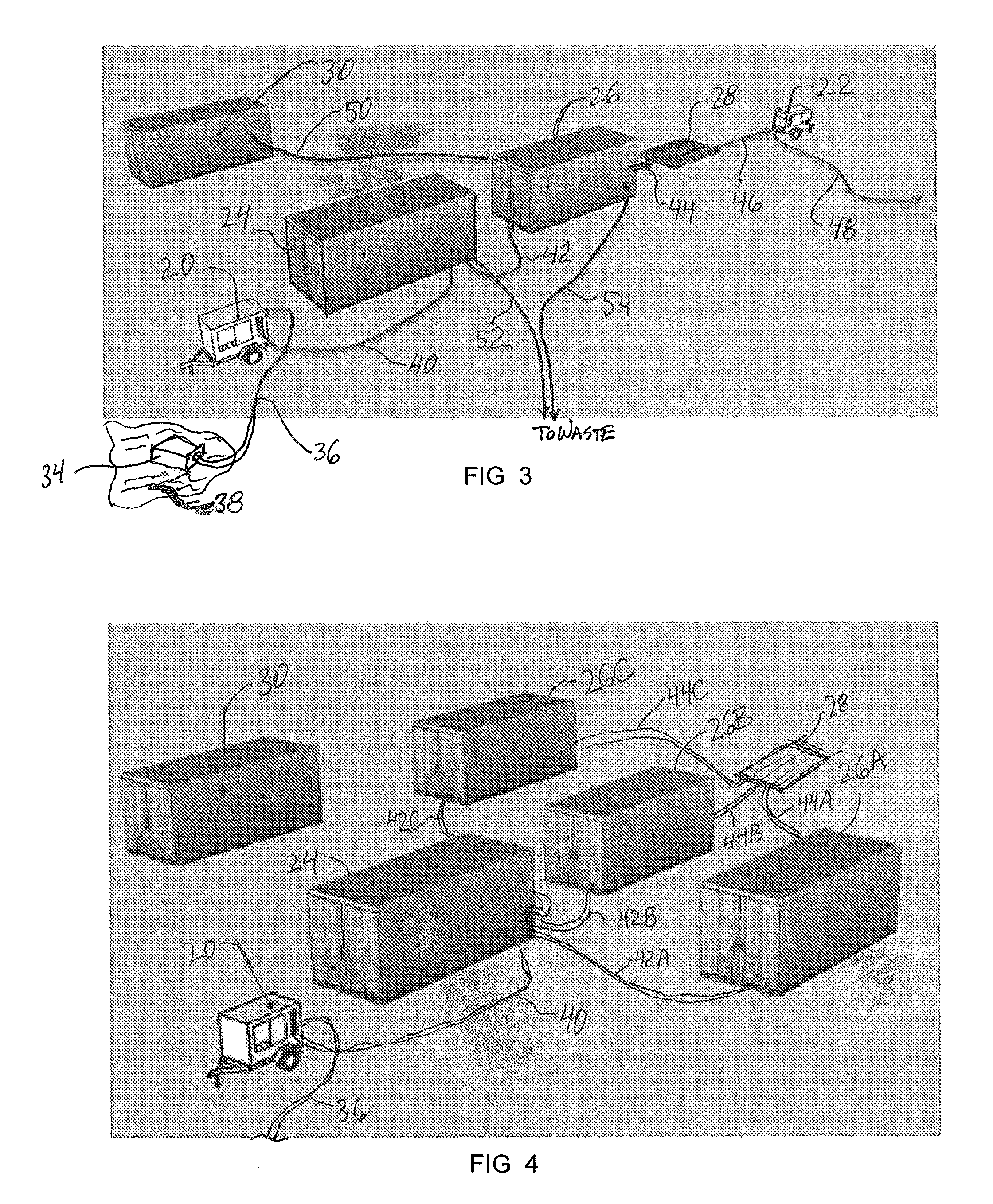Naturally occurring
surface water is typically contaminated with particulate matter (sand,
dirt,
silt) and microorganisms from contact with
wildlife.
Natural disasters, including
severe weather disturbances, can compromise the functionality of existing municipal water treatment facilities.
Likewise, man-made disasters, either accidental or intentional in nature, can damage and / or disable existing water treatment facilities.
Apart from disaster relief, there are also many areas in the world that are underdeveloped and have no water treatment infrastructure.
However, the success of these systems has been limited.
Most early designs were relatively small, producing less than 30,000 gallons per day of
potable water, which is insufficient to support a small municipality.
These systems fouled very quickly when turbid
source water was encountered, and were not effective when attempting to treat waters contaminated with hydrocarbons or organic solvents.
The most advanced systems currently available continue to experience
fouling problems, and have limited ability to remove biological and
chemical agents during extended deployments without including additional
chemical cleaning systems.
Accordingly, they can only be deployed at sites accessible by
truck, and deployment must obviously await arrival of the
truck.
Readily available commercial helicopters are typically limited to lifting a 20-foot long ISO
cargo container at a gross weight of approximately 8,000 pounds.
The substantial variation in the contaminants found in different water sources creates a challenge for designers of mobile water purification systems.
If a purification
system is designed to include treatment processes capable of removing only specific contaminants from source water, it cannot effectively treat water containing other types of contaminants.
Even though a particular source of water may have historically contained only certain types of contaminants, natural or man-made disasters can suddenly introduce different types of contaminants into the source water.
On the other hand, a more comprehensive purification system, designed to treat source water for the removal of all possible contaminants, can be considerably more costly to construct, operate and maintain than a system that treats only for contaminants actually present.
One of the greatest challenges encountered during the field operation or deployment of portable purification equipment is the ability to determine the primary contaminants within the source water, since this determines the requirements of the water purification process.
This is particularly problematic during flood events in which the concentration and type of contaminants may change on an hourly basis.
For example, following Hurricane Katrina, conventional water treatment systems located in the New Orleans area, originally intended to treat
fresh water from the Mississippi River or local lakes, were incapable of treating the contaminated mixture of fresh and
salt water, debris, oil, and chemicals introduced into the source
water supply.
When source water is contaminated by microorganisms, industrial and agricultural pollutants and
petroleum products, such substances cannot be filtered by the usual strainers and
media type filters commonly found in municipal water treatment plants.
If such water purification equipment is needed in a
remote area that is difficult to reach, it will likely be difficult to provide fuel needed to operate such equipment; it will also be more challenging to maintain and protect such equipment.
The person charged with operating
portable water purification equipment at a remote site will often lack the training or equipment needed to properly pre-screen the source water to determine the contaminants required for removal.
Despite several design changes, the “ROWPU” units remain plagued by
fouling problems.
Additionally, it has been recognized that for several contaminants of concern,
reverse osmosis alone is not adequate to provide sufficient removal.
Deficiencies exist in resistance to
fouling, contaminant removal capability,
potable water production capabilities versus physical size, ease of deployment, and operator intervention requirements.
While reverse
osmosis units are highly-effective in removing salts,
heavy metals, oils, pathogens and organic materials, reverse
osmosis membranes also require significantly higher operating pressures to do their job.
In turn, such booster pumps expend significant energy, drawing down on the available fuel source being used to power the
portable water purification system.
In addition, water treatment sources that use reverse
osmosis units often result in production of
purified water at slower flow rates as compared with water treatment systems that do not use reverse osmosis membranes.
Thus, the use of reverse osmosis units under conditions when reverse osmosis is not truly required simply results in wasted energy and less flow.
When dealing with source water having unknown properties, there is a
high potential for fouling water purification equipment.
For example, it is likely that highly-
turbid water will be encountered.
Many known mobile water purification systems do not satisfactorily remove particulate matter before attempting to filter the water.
However, disposable
cartridge filters are quickly fouled, and require frequent changes by the operator. intervention requirements.
The larger
particulates will foul the reverse osmosis membrane, and such foulant is often difficult to remove from the reverse osmosis membrane.
Biofouling is well documented as a common fouling problem in reverse osmosis membrane systems, and such biological contaminants are particularly difficult to remove.
If oil is present in the
raw water source, the oil will readily foul reverse osmosis membrane surfaces.
Apart from fouling problems, typical reverse osmosis membranes are easily damaged by free
chlorine present in the water passed by such membranes.
However, it is known to add
chlorine to backwash water used to periodically backwash
ultrafiltration units that supply feed water to the reverse osmosis units.
Any free chlorine present in the water initially leaving the ultrafiltration vessels during a re-start of the
filtration cycle following backwash is forced into the reverse osmosis units and can cause irreversible damage to the reverse osmosis membranes.
Flushing the ultrafiltration vessels with water after backwash and draining, and before re-start, will usually avoid this problem, but requires a substantial volume of water that is effectively wasted.
In addition, such a flushing cycle further prolongs the time
delay between successive filtration cycles.
While one part of the water purification system may still be fully functional, that part sits idle while the operator cleans the portion of the water purification system that has become fouled.
This practice results in
water production becoming a start-stop procedure, rather than a continuous process.
It can also lead to temporary shortages of
usable water.
Additionally, individual State agencies may impose regulatory limits regarding individual contaminants that are more stringent than Federal standards.
 Login to View More
Login to View More 


